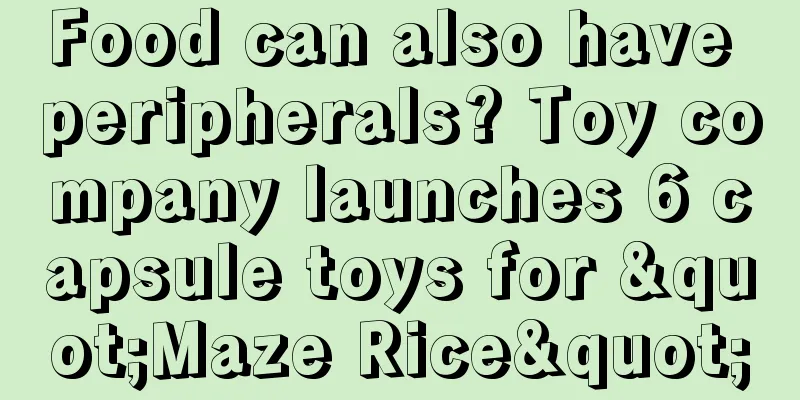Soya Monogatari: What is the appeal of this anime that follows a moving journey and a trajectory of growth?

A comprehensive review and recommendation of The Tale of Soya - Souyamonogatari■ Public MediaTV anime series ■ Original MediaAnime Original ■ Broadcast period February 7, 1984 - June 26, 1984 ■Broadcasting stationTV Tokyo ■Frequencieshalf an hour ■ Number of EpisodesEpisode 21 ■ Director・Coordinator: Takashi Hisaoka ■ Production・Produced by International Film Company ■Works© International Film Company, Shigeo Tsubota ■ StoryIn 1978, an old ship was traveling around Japan. The name of the ship was Soya. It was once famous as Japan's first Antarctic research vessel. Soya was born as a cargo ship for the former Soviet Union, completed as a merchant ship, and became a special service ship for the Imperial Japanese Navy during the war. After the war, it served as a demobilization ship, a lighthouse supply ship, an Antarctic research vessel, and then as a patrol vessel. Its life was full of ups and downs. ■ExplanationThis TV anime series weaves together fact and fiction to tell the story of Japan's first Antarctic research vessel, the Soya, from its construction as a cargo ship ordered by the former Soviet Union in 1936 to its decommissioning as a patrol vessel in 1978. As the story spans nearly half a century, each episode features different time periods and characters. Episodes 16 to 19, which cover the period when the vessel was active as an Antarctic research vessel, are a continuous story. ■Cast・Narrator/Matsushima Minori ■ Main staff・Producer / Juzo Tsubota・Planning / Eizaburo Hirakawa・Coordinator / Takashi Hisaoka・Music / Shun Fukui・Series Composition / Yu Yamamoto・Character Design / Shiro Murata・Art Director / Geki Katsumata・Producer / Shigeo Tsubota (Shigeo Tsubota), Taeko Miyamura・Casting Cooperation / Aoni Production・Color Design / Miwako Sano, Noriko Iguchi・Special Effects / Takashi Maekawa・Cinematography / Jun Sasahara, Nobuyuki Sugaya, Yosuke Moriguchi・Editing / Emiko Yoshida, Mutsumi Kamiya・Sound Director / Nobuhiro Komatsu・Sound / Taneyoshi Imaseki・Sound Effects / Noriyoshi Ohira・Sound Studio / Tabac・Developing / Toei Chemical・Production / Kokusai Eigasha ■ Main robot items・Sōya Japanese icebreaker. Completed as a merchant ship, it served the Imperial Japanese Navy and the Japan Coast Guard, and was also Japan's first Antarctic research vessel. The ship's name comes from the Soya Strait, which lies between Cape Soya in Hokkaido and Cape Nishinotoro in Sakhalin. ■Subtitle・Episode 1: The Secret of Birth ・Episode 2: Adventure in Okhotsk ・Episode 3: A new name! A new mission! ■ Theme songs and music・OP1 Detailed evaluation and recommendation of Soya Monogatari"Sōya Monogatari," broadcast in 1984, is a television anime that depicts the life of Japan's first Antarctic research vessel, the Sōya. This anime depicts the history of the Sōya over 42 years from 1936 to 1978, mixing fiction and real events. Below, we will provide a detailed review and recommendation of this work. Story and Themes"Sōya Monogatari" follows the life of the ship Soya and depicts war, peace, adventure, friendship, and human courage and hope. Each episode revolves around a different time period and characters, and describes the various roles the Soya played and their backgrounds. In particular, episodes 16 to 19, depicting the ship's activities as an Antarctic research vessel, are depicted as a continuous story, leaving a strong impression on viewers. The theme of this work is "human challenge and overcoming." As the Soya faces and overcomes various difficulties, viewers can feel the strength and hope of humanity. The work also depicts the history of how the Soya has influenced and supported the lives of many people, allowing viewers to feel the bond between the ship and the people. Characters and castIn "Sōya Monogatari," the ship itself is the main character, and is voiced by the narrator, Minori Matsushima. Minori Matsushima's calm voice is the perfect fit for telling the history of the Sōya, and it deeply touches the viewer. The characters who appear in each episode also play an important role in coloring the history of the Sōya. In particular, in the episode depicting the Soya's activities as an Antarctic research vessel, two dogs named Taro and Jiro appear and capture the hearts of viewers. These characters make the Soya's history feel more real and add depth to the story. Production and staff"Sōya Monogatari" was produced by Kokusai Eigasha and produced by Tsubota Juzo. The series is written by Yamamoto Masaru, the character design is by Murata Shiro, the art direction is by Katsumata Geki, and the music is by Fukui Shun. Together, these staff members have created a beautiful and moving portrayal of the history of the Sōya. In particular, Shun Fukui's music plays an important role in enhancing the adventures and challenges of the Soya, while Shiro Murata's character designs visually express the history of the Soya, leaving a strong impression on the viewer. Animation and visualsThe animation of "Sōya Monogatari" was produced using the technology of the 1980s, providing vivid visuals to the audience of the time. In particular, the harsh environment of the Antarctic and the beautiful scenery on the sea make a strong impression on the audience. In addition, the design of the Sōya is a faithful reproduction of the actual ship, giving it a sense of historical value. The visuals of this work not only beautifully depict the history of the Soya, but also play an important role in moving the viewers. In particular, in the episode depicting the Soya's activities as an Antarctic research vessel, the sight of the Soya struggling in a harsh environment captures the viewers' hearts. Music and theme songThe music for "Souya Monogatari" was composed by Shun Fukui and plays an important role in enhancing the atmosphere of the work. Especially in the scenes depicting adventure and challenge, the music enhances the emotions of the viewer and adds depth to the story. In addition, the theme song "Souya Monogatari" and the ending theme "Tabidachi" were sung by Aki & Isao, leaving a strong impression on the viewer. These pieces of music and the theme song portray the history of the Soya in a more moving way, and are important elements that deeply move the viewers. In particular, the theme song "Sōya Monogatari" is a song that symbolizes the adventures and challenges of the Soya, and resonates in the hearts of viewers. Ratings and Recommendations"The Tale of the Soya" is a moving story that follows the life of the ship Soya and portrays human challenge, overcoming, and hope. The story combines fiction and fact to depict the history of the Soya, leaving viewers with a deep emotional response. The film's beautiful visuals and moving music also add to its appeal. The reasons why I recommend this work are as follows:
"The Tale of Soya" is a work that combines historical value with a moving story that will deeply touch the viewer. It is especially recommended for history and adventure lovers. Also, by watching it with your family, you can learn together about the history of Soya and the challenges and overcoming of human beings. Above is a detailed review and recommendation of "Souya Monogatari". This is a moving work that depicts human challenges, overcoming obstacles, and hope through the history of Soya, and it will deeply move the viewer. Please watch it and experience the emotion. |
<<: The appeal and evaluation of "Dream Warrior Wingman": Reevaluating a nostalgic hero anime
Recommend
Midori no Makibao: The excitement and appreciation of a never-ending challenge
Midori no Makibao: An Endless Challenge!! - A mov...
Sega's famous mobile game "Blue Knights" TV animation will be broadcast in January 2021
The famous mobile game "Blue Knights" h...
"Love Apartment 5" is scheduled to premiere in the fourth quarter of 2019 and will be exclusively available on iQiyi
At the 2018 iQIYI iJOY Joy Conference held today,...
Assault Lily Fruits: Review and recommendation for attractive characters and deep story
Assault Lily Fruits - Assault Lily Fruits overvie...
The appeal and reviews of "Stop This Sound!": An anime with a touching koto sound
"Stop This Sound!": A moving story of y...
"Halo" TV series cast announced, "American Gods" Madman Sweeney plays Master Chief
Showtime TV network announced today some of the c...
Kakuriyo no Yadomeshi review: Delicious food meets a fascinating story
"Kakuriyo no Yadomeshi" - The fascinati...
Animal rights group condemns horse death on set of The Lord of the Rings: The Power of the Rings: animal exploitation
Recently, the crew of "The Lord of the Rings...
The latest trailer of the movie "The Mafia" is released and is scheduled to be released in 2021
The new movie "Yakuza and Family", whic...
Zegler is smiling brightly while promoting the movie "Snow White" in Japan
Recently, Rachel Zegler, the star of Disney's...
The PV of the new character of the animation "Rent-a-Girlfriend" has been released: Nao Toyama will appear in the show!
According to new news, the official TV animation ...
"Maleficent 2" new character poster exposed Angelina Jolie cool and beautiful
Today (September 4), Disney's official Weibo ...
The appeal and evaluation of Cyborg Hana-chan: A masterpiece anime seen from a modern perspective
Cyborg Hana-chan: A fusion of cyberpunk and youth...
Warner: There are 4 DC movies next year and we want to make more Harry Potter movies
At an investor earnings conference on Thursday, W...
The final season of "Beastiality" released a new key visual image, and the first part will premiere at the end of the year
On July 5, the new main visual image of the final...









